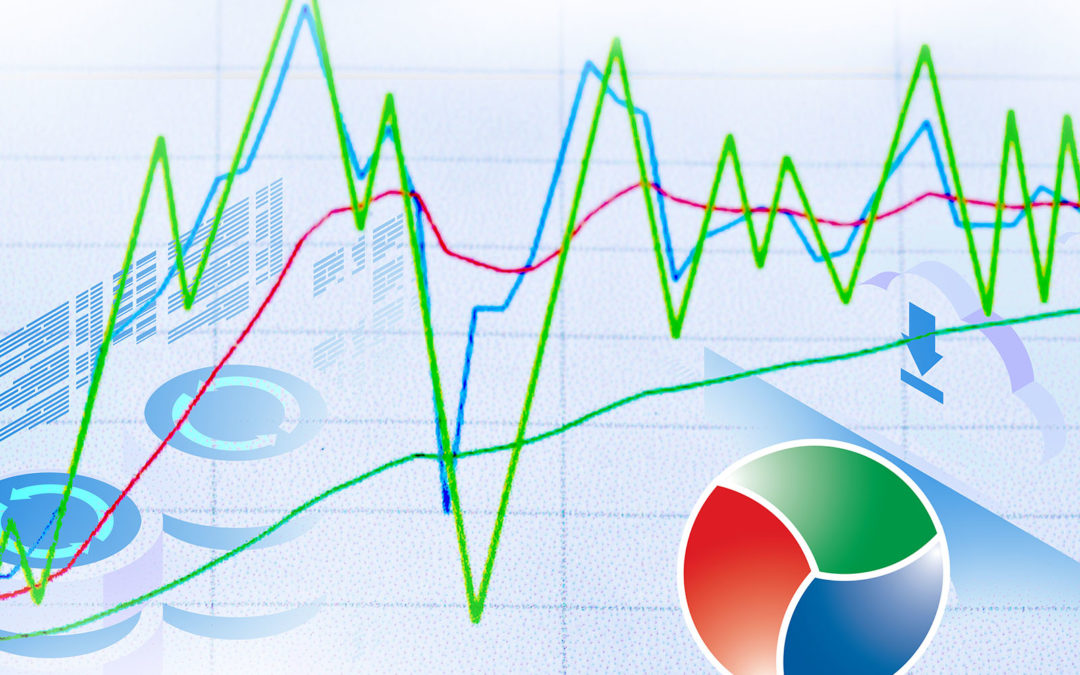A readable, well-organized textbook could be invaluable to “help corporate forecasters-in-training understand the basics of time series forecasting,” as Tom Willemain notes in the conclusion to this review, originally published in Foresight: The International Journal of Applied Forecasting. Principally written for an academic audience, the review also serves inexperienced demand planning professionals by pointing them to an in-depth resource.
This neat little book aims to “introduce the reader to quantitative forecasting of time series in a practical, hands-on fashion.” For a certain kind of reader, it will doubtless succeed, and do so in a stylish way.
The author, Dr. Galit Shmueli, is the SRITNE Chaired Professor of Data Analytics and Associate Professor of Statistics and Information Systems at the Indian School of Business, Hyderabad. She has authored or coauthored several other books on applied statistics and business analytics.
The book is meant to be a text for a “mini-semester” course for graduate or upper-level undergraduate students. I think it would be a stretch to believe there is enough technical material here to serve as the basis for a graduate course, but I could see it working well for undergraduates in industrial engineering or management who have had a prior statistics course (and therefore will indeed be able to “recall that a 95% prediction interval for normally distributed errors is…”).
There are end-of-chapter exercises of appropriate size and even setups for three real-world semester projects, so instructors could use the book as envisioned by the author. The book illustrates its points using XLMiner, an Excel add-in, and students can use the free demo version for almost all the exercises. Text datasets are available from the book’s web site, which also provides a free time series analysis “dashboard” application. The author notes that other software can be used in place of XLMiner and mentions Minitab, JMP, and Rob Hyndman’s forecast library in R.
While reading this book, I was delighted by its clarity. Having spent time recently correcting the technical prose of two otherwise good graduate students, I found the writing in this book to be a refreshing contrast, making technical concepts understandable.
 Another virtue of this book is its selection of topics. The technical ones are reasonably standard (smoothing methods, regression using polynomial trends, and dummy variables) but also range a bit toward the more exotic (logistic regression, neural nets, a bit of ARIMA). More impressive is the inclusion of what might be called “meta-topics” relevant to forecasting: performance assessment, an overview of alternative technical approaches, and one on the forecasting process, from definition of goals to ways to gear reports differently for managerial and technical audiences. This is the kind of forecasting wisdom we find in Chris Chatfield’s book (2004), though presented rather less tartly and with less mathematical exposition. I typically recommend Chatfield’s introductory book for more technical readers interested in getting into time series; I would recommend Shmueli’s book for a more general audience.
Another virtue of this book is its selection of topics. The technical ones are reasonably standard (smoothing methods, regression using polynomial trends, and dummy variables) but also range a bit toward the more exotic (logistic regression, neural nets, a bit of ARIMA). More impressive is the inclusion of what might be called “meta-topics” relevant to forecasting: performance assessment, an overview of alternative technical approaches, and one on the forecasting process, from definition of goals to ways to gear reports differently for managerial and technical audiences. This is the kind of forecasting wisdom we find in Chris Chatfield’s book (2004), though presented rather less tartly and with less mathematical exposition. I typically recommend Chatfield’s introductory book for more technical readers interested in getting into time series; I would recommend Shmueli’s book for a more general audience.
No review is complete without quibbles. Here are a few—too few to undo my very positive view of this impressive little book:
• The text makes a good case for “well formatted and easily readable” charts (p. 179). But I found many of the screen shots to be poorly printed and difficult to see. The book is otherwise so visually pleasing that these defects seem very out of character. It uses luxurious amounts of white space and whimsical marginal art to great effect, producing a very “light” feel that must surely help comprehension.
• The author claims (p. 115) that smoothing methods (e.g., moving averages, exponential smoothing) cannot be fully automated because “the user must specify smoothing constants.” Of course, this is not so, since there are several software packages that do this, and the text later contradicts itself on this point on page 127.
• The otherwise good discussion of autocorrelation misleads when it claims (p. 88) that negative lag-1 autocorrelation means that “high values are immediately followed by low values and vice versa.” Well, usually, but not always.
When I finished reading this book, I realized immediately that there is another target audience outside the classroom. My company often conducts training sessions on the use of our software, and these include some general background on forecasting methods and processes. If we could excise the material on XLMiner, and even if we couldn’t, this text would make a wonderful “leave behind” to help corporate forecasters-in-training understand the basics of time series forecasting. The book is so well written, well organized and well designed that it might even be read. We can certainly use it to help our new programmers understand the applications they are developing. And this book might even serve as guilty reading for a graduate student who wants to really “get” what’s going on in Box, Jenkins and Reinsel (2008).
Thomas Willemain, PhD, co-founded Smart Software and currently serves as Senior Vice President for Research. Dr. Willemain also serves as Professor Emeritus of Industrial and Systems Engineering at Rensselaer Polytechnic Institute and as a member of the research staff at the Center for Computing Sciences, Institute for Defense Analyses.
Related Posts

Forecast-Based Inventory Management for Better Planning
Forecast-based inventory management, or MRP (Material Requirements Planning) logic, is a forward-planning method that helps businesses meet demand without overstocking or understocking. By anticipating demand and adjusting inventory levels, it maintains a balance between meeting customer needs and minimizing excess inventory costs. This approach optimizes operations, reduces waste, and enhances customer satisfaction.

Leveraging Epicor Kinetic Planning BOMs with Smart IP&O to Forecast Accurately
In this blog, we explore how leveraging Epicor Kinetic Planning BOMs with Smart IP&O can transform your approach to forecasting in a highly configurable manufacturing environment. Discover how Smart, a cutting-edge AI-driven demand planning and inventory optimization solution, can simplify the complexities of predicting finished goods demand, especially when dealing with interchangeable components. Learn how Planning BOMs and advanced forecasting techniques enable businesses to anticipate customer needs more accurately, ensuring operational efficiency and staying ahead in a competitive market.

Daily Demand Scenarios
In this Videoblog, we will explain how time series forecasting has emerged as a pivotal tool, particularly at the daily level, which Smart Software has been pioneering since its inception over forty years ago. The evolution of business practices from annual to more refined temporal increments like monthly and now daily data analysis illustrates a significant shift in operational strategies.












